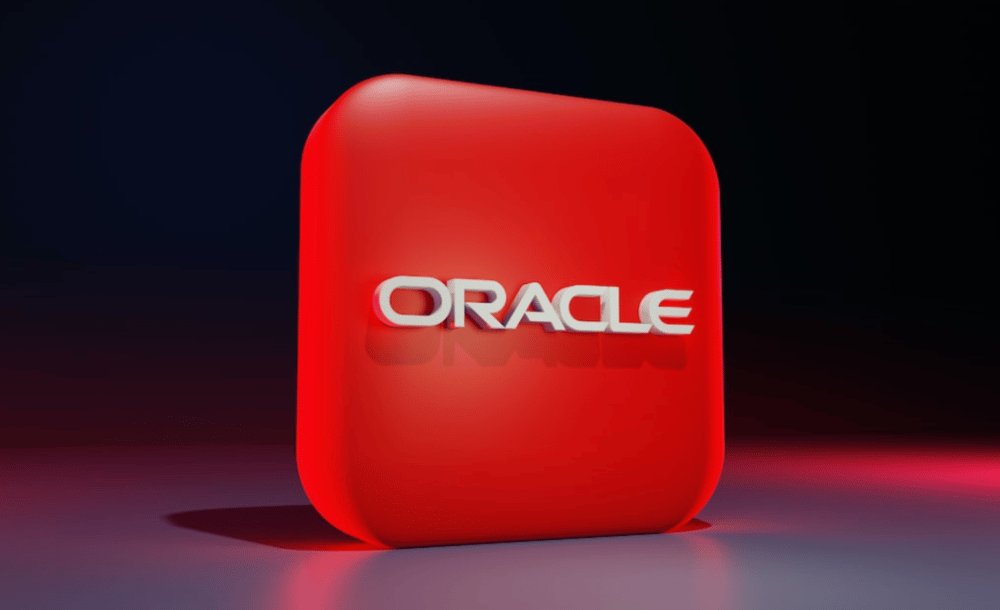Oracle Stock Surges on Upgraded Forecast Amid AI Cloud Momentum
Shares of Oracle Corporation $ORCL jumped nearly 8% in premarket trading on Thursday following the company’s upward revision of its full-year revenue forecast. The software giant cited strong and sustained demand for its AI-driven cloud infrastructure services as the primary catalyst.
The announcement reinforces investor optimism in the enterprise cloud sector, particularly at a time when geopolitical uncertainty and macroeconomic headwinds are placing added pressure on Big Tech. Oracle’s performance diverges from broader caution in the tech space, fueled by regulatory risks and global tariff concerns.
AI Tailwinds Drive Cloud Expansion, Defying Global Tech Caution
Oracle’s bullish outlook underscores the shifting dynamics of enterprise software and cloud infrastructure, where artificial intelligence (AI) is rapidly becoming a foundational layer of growth. The company’s cloud segment—especially Oracle Cloud Infrastructure (OCI)—has seen significant traction, buoyed by enterprise adoption of generative AI solutions that require high-performance, scalable environments.
The forecast revision comes at a pivotal moment. While the broader technology sector grapples with supply chain disruptions and potential cost shocks from U.S. tariffs on tech components, Oracle’s resilience signals a strategic advantage rooted in infrastructure-centric offerings rather than consumer hardware or ad-based models.
Oracle CEO Safra Catz emphasized that demand for AI workloads was outpacing expectations, particularly across industries seeking to modernize operations via automation, data analytics, and cloud-native platforms.

Key Facts
💹 Oracle shares surged ~8% in premarket trading on revenue guidance upgrade.
☁️ Cloud services, including AI-related workloads, are central to the revised forecast.
🧠 Growth in generative AI applications is driving enterprise cloud demand.
📈 Oracle’s stock has already risen ~6% year-to-date, outperforming sector peers.
🌐 Cited risks include global tariffs and geopolitical instability, especially regarding U.S.–China trade.
Market Reaction and Sector-Wide Implications
The tech-heavy NASDAQ Composite $^IXIC showed muted movement in early Thursday trading, suggesting Oracle’s gain is more company-specific than reflective of sector-wide euphoria. Analysts view Oracle’s momentum as differentiated, driven by business-to-business (B2B) infrastructure rather than more volatile consumer-driven demand.
Despite the positive update, market participants remain wary of political overhangs. Trade policy uncertainty under former U.S. President Donald Trump, particularly surrounding semiconductor tariffs, could ripple into AI development pipelines, slowing capex decisions across the tech industry.
Investors and analysts are watching how Oracle’s peers, such as Microsoft $MSFT, Amazon $AMZN, and Alphabet $GOOGL, respond in upcoming earnings, especially regarding AI investment intensity and margin impacts.

Key Points
Oracle’s revenue upgrade marks a rare bright spot in an uncertain tech macro environment.
AI integration is no longer experimental—it's driving top-line results in enterprise IT.
Cloud infrastructure, not just software, is where Oracle is winning share.
Tariff exposure remains a wildcard for Big Tech’s hardware-dependent AI ambitions.
Earnings momentum in infrastructure-focused firms could shift investor attention away from consumer-centric platforms.
Oracle Emerges as an AI Infrastructure Leader Amid Market Volatility
Oracle’s revised revenue forecast and corresponding stock surge affirm its position as a leading beneficiary of the enterprise AI transformation. While broader technology valuations remain sensitive to macro and geopolitical shocks, Oracle’s business model resilience, particularly in cloud infrastructure and AI services, provides a compelling case for long-term growth.
This latest development highlights a critical trend: companies that enable AI execution at scale—via cloud compute, data management, and secure enterprise infrastructure—are increasingly favored by both clients and investors. As Oracle continues to invest in high-performance computing and strategic AI partnerships, it positions itself not just as a legacy software firm, but as a core enabler of the AI economy.















Comments
This acquisition could serve as a catalyst for broader transformation in the automation landscape
Long-term automation potential is being redefined by investment strategies focused on scalability and integration